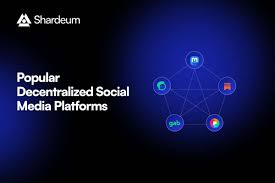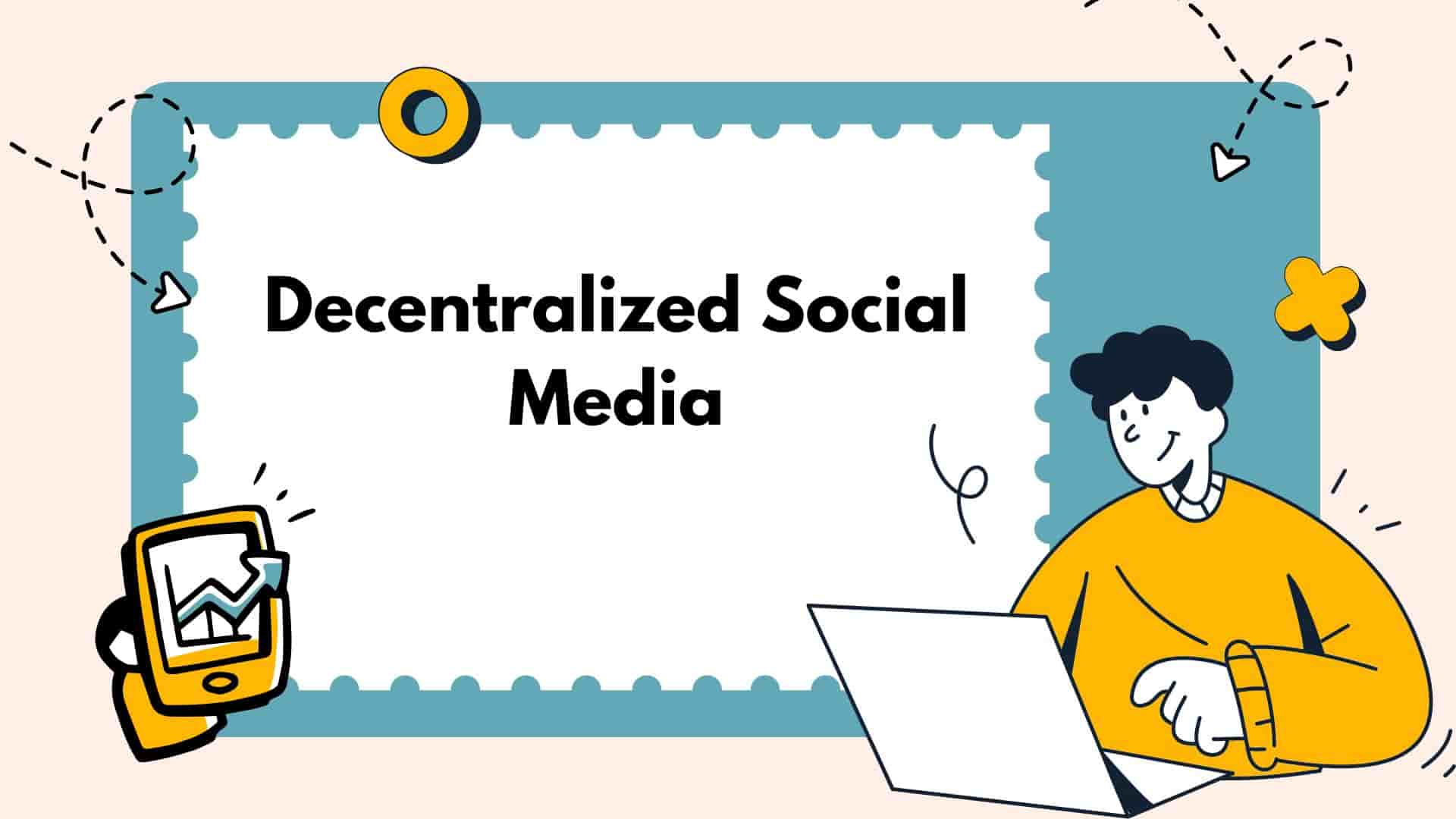Imagine a world where your social media feed isn’t controlled by a single corporate giant, where your data isn’t sold to the highest bidder, and where you have the power to shape your online experience. Sounds like a digital utopia, right? Welcome to the rise of decentralized social media platforms, a game-changing trend that’s shaking up how we connect online. In 2024, over 60% of internet users expressed concerns about data privacy, pushing many to explore alternatives to traditional platforms like X or Instagram.
Decentralized social media promises freedom, transparency, and user control—but is it all it’s cracked up to be? In this post, we’ll dive into what these platforms are, why they matter, and whether they’re the future of social networking. Buckle up for a fun, insightful ride!
What Is Decentralized Social Media?
Decentralized social media platforms are online networks that operate without a central authority, unlike traditional platforms controlled by a single company. Built on blockchain technology or peer-to-peer networks, they distribute data across multiple nodes, ensuring no single entity owns or controls the platform. Think of it like a digital town square where everyone has a say, not just the mayor!
These platforms prioritize user control, letting you own your data, decide who sees your posts, and even monetize your content. Popular examples include Mastodon, Lens Protocol, and Peepeth. Unlike X, where algorithms dictate your feed, decentralized social media hands the reins to users, creating a more transparent and democratic online space.
Why Decentralized Platforms Are Gaining Traction
The shift toward decentralized social media isn’t just a tech fad—it’s a response to real user frustrations. Let’s break down why these platforms are stealing the spotlight.
Privacy and Data Ownership
Ever feel like Big Tech knows too much about you? You’re not alone. Traditional platforms often harvest and sell user data, with Statista reporting that 64% of users worry about privacy. Decentralized social media flips the script by giving you control over your data. Want to keep your posts private or share them selectively? You decide, not an algorithm.
Censorship Resistance
Tired of posts being flagged or accounts suspended without explanation? Decentralized platforms are censorship-resistant, meaning no single authority can delete your content or ban you. This freedom appeals to creators and activists who value unfiltered expression. Learn more about content moderation challenges in our related post.
Community-Driven Governance
On decentralized platforms, users often have a say in how the network operates. Through DAOs (Decentralized Autonomous Organizations), communities vote on rules, features, and updates. It’s like running a social media platform as a co-op—everyone gets a vote!
Top Decentralized Social Media Platforms
Curious about where to start? Here’s a rundown of some leading decentralized social media platforms making waves in 2025:
|
Platform |
Key Feature |
Best For |
|---|---|---|
|
Mastodon |
Open-source, federated servers |
Privacy-conscious users |
|
Lens Protocol |
NFT-based profiles, creator monetization |
Content creators, influencers |
|
Peepeth |
Blockchain-based, immutable posts |
Ethical social networking |
|
Diaspora |
User-controlled data pods |
Tech-savvy privacy advocates |
Each platform offers unique features, from Mastodon’s server-based “fediverse” to Lens Protocol’s creator-friendly tools. Check out our guide on choosing the right social platform for tips on picking one that suits you.
Pros and Cons of Decentralized Social Media
Like any tech, decentralized social media has its highs and lows. Here’s a quick look:
-
Pros:
-
Data Ownership: You control your personal info.
-
No Censorship: Speak freely without fear of bans.
-
Transparency: Blockchain ensures open operations.
-
Monetization: Earn from content without middlemen.
-
-
Cons:
-
Learning Curve: Not as user-friendly as mainstream apps.
-
Moderation Issues: Less control can lead to harmful content.
-
Scalability: Some platforms struggle with large user bases.
-
Want to weigh the benefits of traditional vs. decentralized platforms? Read our social media comparison guide.

How Decentralized Platforms Work
At their core, decentralized social media platforms rely on blockchain or peer-to-peer (P2P) technology. Here’s the gist:
-
Distributed Networks: Instead of one server, data is stored across thousands of nodes (computers) worldwide.
-
Blockchain: Many platforms use blockchain to record posts, likes, and transactions securely. Think of it as a tamper-proof digital ledger.
-
Smart Contracts: These automate tasks like content monetization or governance voting.
-
Cryptographic Security: Your identity and data are protected with encryption.
This setup ensures no single company can pull the plug or snoop on your activity. For a deeper dive, explore blockchain basics.
Read more: Best Sustainable travel credit cards: Insights 2025
Challenges Facing Decentralized Social Media
Decentralized social media sounds dreamy, but it’s not without hurdles. Here are the biggest challenges:
-
User Adoption: Mainstream users may find the tech intimidating. Convincing your grandma to join Mastodon? Good luck!
-
Content Moderation: Without central control, moderating hate speech or misinformation is tricky. Some platforms rely on community guidelines, but enforcement varies.
-
Scalability: Blockchain-based platforms can be slow or costly as user numbers grow.
-
Regulatory Uncertainty: Governments are still figuring out how to regulate decentralized tech, which could lead to legal gray areas.
Despite these challenges, the decentralized movement is gaining momentum. Curious about overcoming tech adoption barriers? See our post on tech trends for all ages.
The Future of Decentralized Social Media
So, what’s next for decentralized social media? The future looks bright, with trends pointing to:
-
Mass Adoption: As privacy concerns grow, more users will flock to decentralized platforms. Forbes predicts that blockchain-based social media could hit 1 billion users by 2030.
-
Integration with Web3: Expect tighter integration with NFTs, crypto wallets, and virtual reality.
-
Improved UX: Developers are working to make platforms as intuitive as X or TikTok.
-
Creator Economy: More tools for monetizing content, like tokenized likes or subscriptions.
Will decentralized platforms replace traditional social media? Maybe not tomorrow, but they’re carving out a serious niche. Stay ahead of the curve with our Web3 trends guide.
Disadvantages of Decentralized Social Media
While decentralized social media platforms offer exciting benefits, they come with notable drawbacks that can impact user experience and adoption. Below, we explore the key disadvantages in detail, maintaining a conversational tone with a touch of humor to keep it engaging.
1. Steep Learning Curve
Decentralized social media isn’t exactly “plug and play.” Unlike signing up for X or Instagram with a single click, these platforms often require tech know-how. You might need to set up a crypto wallet, understand blockchain basics, or navigate federated servers (looking at you, Mastodon). For the average user—say, your uncle who still emails chain letters—this can feel like learning rocket science.
- Why It’s a Problem: The complexity scares off non-tech-savvy users, limiting mainstream adoption.
- Example: Joining Lens Protocol involves linking a wallet and minting an NFT profile, which can overwhelm beginners.
2. Content Moderation Challenges
With no central authority, moderating content on decentralized platforms is like herding cats. While freedom from censorship is a perk, it can lead to unfiltered harmful content, like hate speech or misinformation. Some platforms rely on community moderation, but inconsistent enforcement can create chaotic or toxic environments.
- Why It’s a Problem: Users may encounter offensive material, and brands might hesitate to advertise in unregulated spaces.
- Example: Mastodon servers have varying moderation policies, leading to disputes over what’s acceptable.
3. Scalability Issues
Decentralized platforms, especially those on blockchain, struggle to handle large user bases. Blockchain transactions can be slow and costly (hello, Ethereum gas fees!), making it hard to scale without compromising speed or affordability. Imagine waiting 10 minutes for your post to load—yawn!
- Why It’s a Problem: Slow performance frustrates users accustomed to instant feeds on traditional platforms.
- Example: Peepeth, while innovative, can lag during high-traffic periods due to blockchain constraints.
4. Regulatory Uncertainty
Governments worldwide are still scratching their heads over how to regulate decentralized tech. Since no single entity controls these platforms, legal accountability is murky. This raises concerns about illegal content, tax compliance for monetized creators, or even platform bans in restrictive regions.
- Why It’s a Problem: Users and developers face potential legal risks, deterring investment and growth.
- Example: Some countries have cracked down on crypto-based platforms, creating access barriers.
Learn more about navigating tech regulations in our Web3 legal guide.
5. Limited User Base and Network Effects
Decentralized platforms are still niche, meaning fewer users compared to giants like X or TikTok. If your friends aren’t on Mastodon or Diaspora, you’re shouting into a digital void. Social media thrives on network effects—the more users, the better the experience—and decentralized platforms haven’t hit critical mass yet.
- Why It’s a Problem: Smaller communities can feel isolating, reducing engagement.
- Example: You might love Peepeth’s ethos, but with fewer active users, your posts may get less traction.
6. User Experience Gaps
Let’s be real: decentralized social media platforms often lack the polish of their centralized counterparts. Clunky interfaces, confusing navigation, and missing features (like robust search or seamless mobile apps) can make the experience feel like a beta test. Traditional platforms have had years to perfect their UX—decentralized ones are still catching up.
- Why It’s a Problem: Poor UX drives users back to familiar, user-friendly apps.
- Example: Diaspora’s interface can feel dated compared to Instagram’s sleek design.

-
Advantages of Decentralized Social Media
Decentralized social media platforms are rewriting the rules of online connection, offering a refreshing alternative to traditional, centralized networks like X or Instagram. With user empowerment at their core, these platforms bring a host of benefits that appeal to privacy buffs, creators, and free-speech advocates alike. Below, we dive into the key advantages of decentralized social media in a conversational, slightly humorous tone, complete with subheadings, a bulleted list, and SEO optimization.
1. Enhanced Privacy and Data Ownership
Ever feel like Big Tech is peeking over your shoulder, collecting your data like it’s Pokémon cards? Decentralized social media puts you back in control. Unlike centralized platforms that harvest and sell your info, these networks let you own your data. You decide who sees your posts, and your personal details stay secure on blockchain or peer-to-peer systems.
- Why It Matters: With 64% of users worried about data privacy, owning your data is a game-changer.
- Example: On Lens Protocol, your profile is an NFT you control, not a corporate database entry.
Want to learn more about protecting your data? Check our guide to online privacy.
2. Censorship Resistance
Tired of your posts being flagged or your account suspended for mysterious reasons? Decentralized platforms are your digital safe haven. Since no single entity controls the network, it’s nearly impossible for anyone to censor your content or ban you. This makes decentralized social media a haven for creators, activists, and anyone who values free expression.
- Why It Matters: You can speak your mind without fear of a corporate overlord hitting the mute button.
- Example: Mastodon’s federated servers ensure no central authority can silence your voice.
3. Community-Driven Governance
Imagine a social media platform where you get a say in the rules. Decentralized social media often uses DAOs (Decentralized Autonomous Organizations), letting users vote on features, policies, and updates. It’s like running a digital democracy instead of bowing to a tech giant’s whims.
- Why It Matters: Users feel empowered, fostering a sense of ownership and community.
- Example: Lens Protocol lets users influence platform decisions via tokenized governance.
Curious about DAOs? Dive into our Web3 governance explainer.
4. Creator Monetization Opportunities
Why let platforms like YouTube or TikTok take a huge cut of your earnings? Decentralized social media platforms let creators monetize directly through cryptocurrencies, NFTs, or tokenized likes. No middlemen, no shady ad algorithms—just you and your audience.
- Why It Matters: Creators can earn more fairly for their content.
- Example: Peepeth allows users to tip creators with Ethereum, cutting out ad-based revenue models.
5. Transparency and Trust
Decentralized platforms, especially those built on blockchain, are transparent by design. Every post, transaction, or interaction is recorded on a public ledger, making it tamper-proof and verifiable. No more wondering if an algorithm is secretly burying your posts!
- Why It Matters: Transparency builds trust, especially for users wary of corporate agendas.
- Example: Diaspora’s open-source code lets techies verify how the platform operates.
For more on blockchain’s role, see Blockchain.com’s learning portal.
6. Resilience and Uptime
Centralized platforms can go down during outages or face government shutdowns (remember those X blackouts?). Decentralized social media, spread across countless nodes, is nearly impossible to take offline. It’s like a digital hydra—cut one server, and others keep the network alive.
- Why It Matters: Reliable access is crucial for users in restrictive regions or during crises.
- Example: Mastodon’s federated structure ensures uptime even if one server fails.
Summary of Advantages
- Privacy and Data Ownership: You control your data, not a corporation.
- Censorship Resistance: Speak freely without fear of bans.
- Community Governance: Vote on platform rules and features.
- Creator Monetization: Earn directly via crypto or NFTs.
- Transparency: Blockchain ensures open, verifiable operations.
- Resilience: Distributed networks stay online no matter what.
Why These Advantages Shine
The advantages of decentralized social media tackle the biggest gripes users have with traditional platforms: privacy invasions, censorship, and unfair monetization. Whether you’re a creator looking to earn more, an activist needing a safe space, or just someone who wants a transparent online experience, these platforms deliver. As they evolve, expect even more user-friendly features to make them a serious contender in the social media world. Ready to explore? Check our guide to joining decentralized platforms.
FAQs About Decentralized Social Media
What is decentralized social media?
Decentralized social media platforms run on blockchain or P2P networks, giving users control over data and content without a central authority. Examples include Mastodon and Lens Protocol.
Are decentralized platforms safe?
They’re generally secure due to encryption and blockchain, but risks like scams or unmoderated content exist. Always verify platform credibility and use strong passwords.
Can I earn money on decentralized social media?
Yes! Many platforms let creators monetize content via NFTs, tokenized likes, or subscriptions, cutting out middlemen like traditional ad networks.
How do I join a decentralized platform?
Choose a platform (e.g., Mastodon), sign up via their website or app, and follow setup instructions. Some require crypto wallets for full features.
Why switch to decentralized social media?
Switch for better privacy, censorship resistance, and user control. If you value data ownership and transparency, these platforms are worth exploring.
Conclusion
Decentralized social media platforms are more than a tech buzzword—they’re a bold step toward a freer, fairer internet. By putting users in the driver’s seat, they tackle privacy woes, censorship gripes, and creator frustrations head-on. Sure, they’ve got growing pains, like clunky interfaces or moderation headaches, but the potential is huge. As we head deeper into the Web3 era, these platforms could redefine how we connect, create, and share online. Ready to ditch Big Tech’s grip or just curious? Explore a decentralized platform today and see what the fuss is about. Leave your thoughts in the comments! Which platform are you eyeing, or are you sticking with the classics?


В этой статье собраны факты, которые освещают целый ряд важных вопросов. Мы стремимся предложить читателям четкую, достоверную информацию, которая поможет сформировать собственное мнение и лучше понять сложные аспекты рассматриваемой темы.
Разобраться лучше – https://vyvod-iz-zapoya-1.ru/